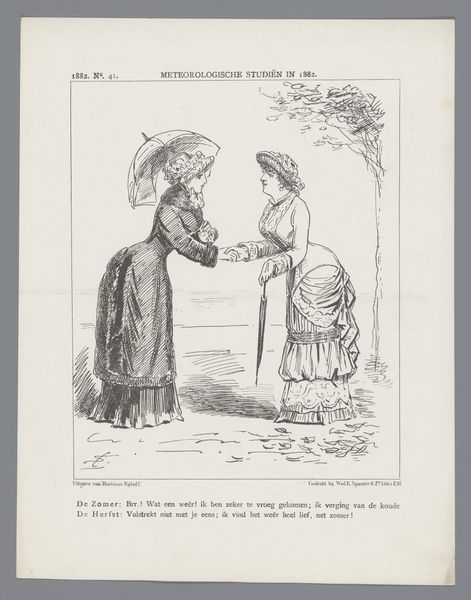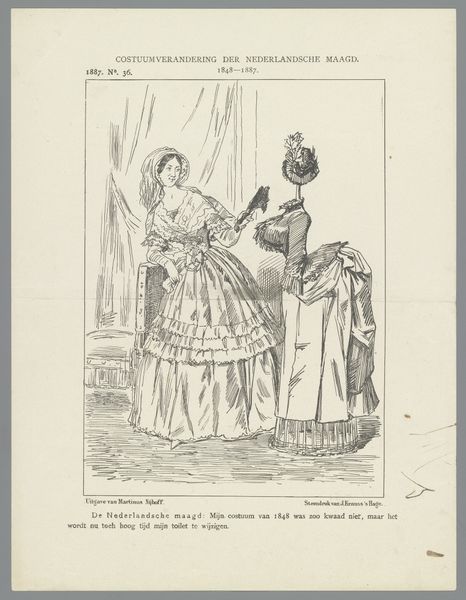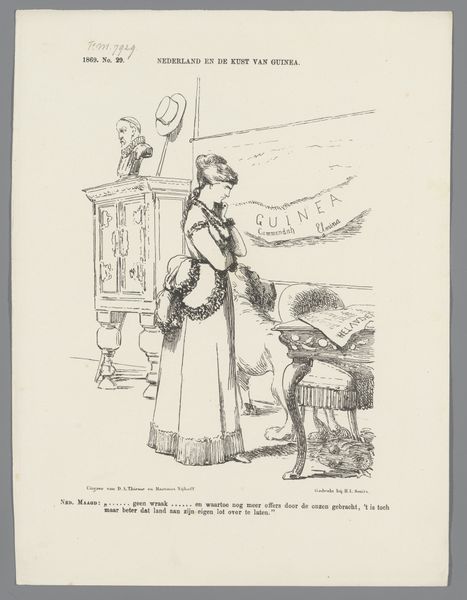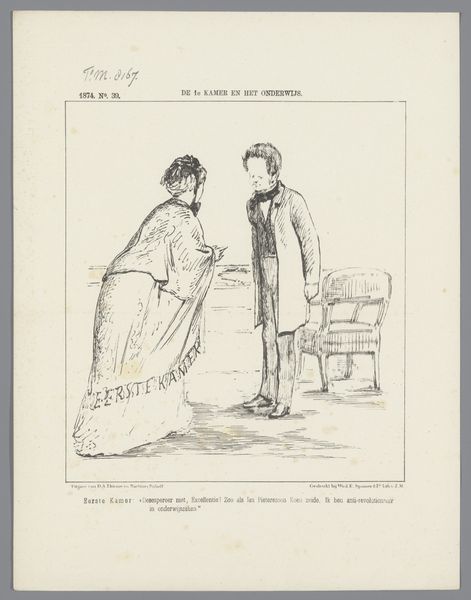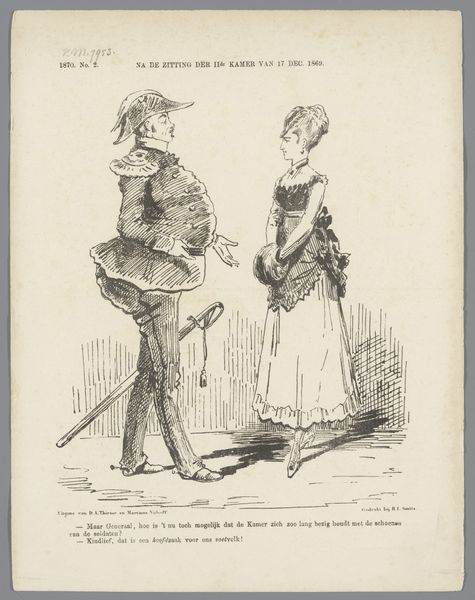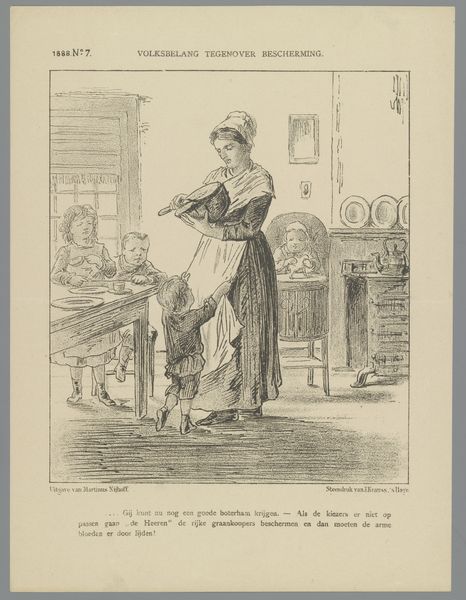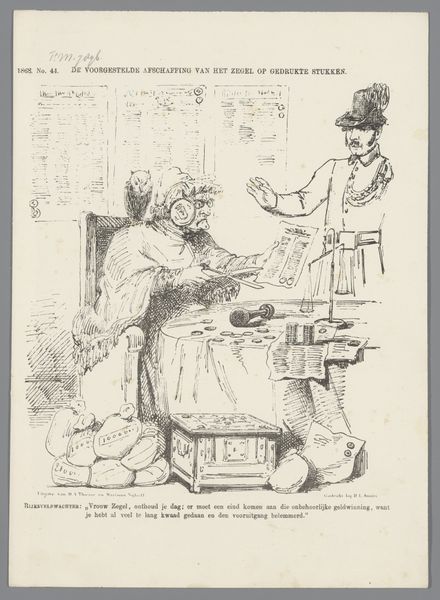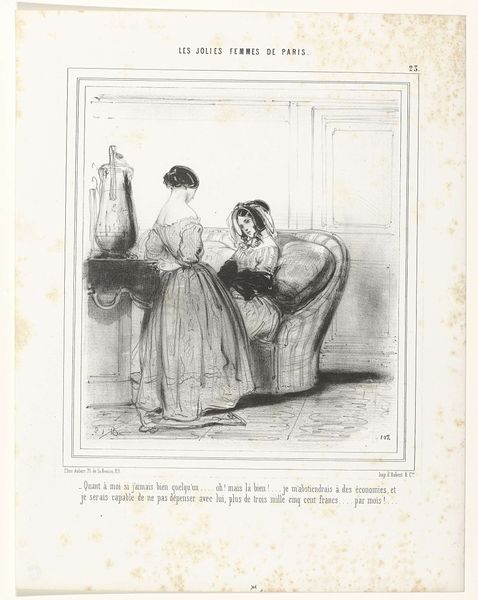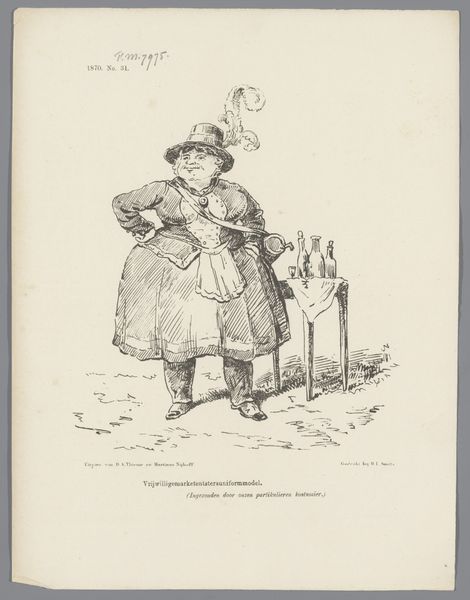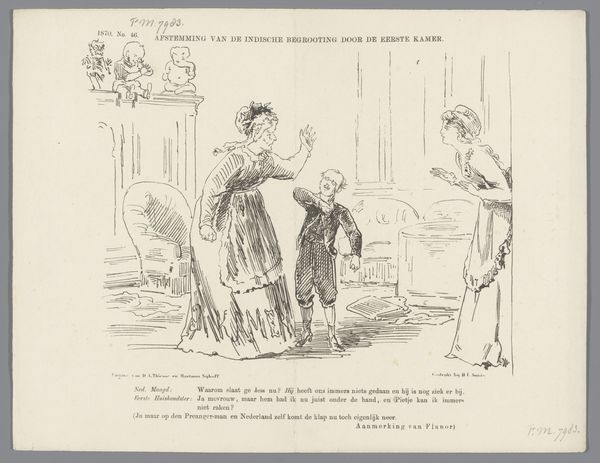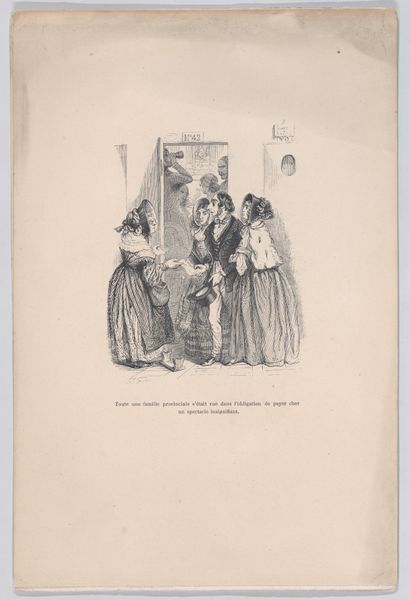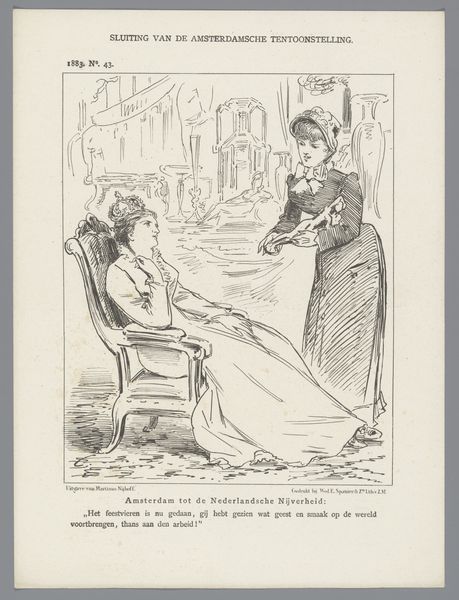
drawing, print
#
drawing
#
comic strip sketch
#
quirky illustration
#
dutch-golden-age
# print
#
caricature
#
old engraving style
#
personal journal design
#
personal sketchbook
#
idea generation sketch
#
sketchwork
#
sketchbook drawing
#
genre-painting
#
history-painting
#
storyboard and sketchbook work
#
sketchbook art
#
realism
Dimensions: height 275 mm, width 215 mm
Copyright: Rijks Museum: Open Domain
Curator: Here we have a print titled "Spotprent over de badmode, 1884" from Johan Michaël Schmidt Crans, dating back to 1884. The text translates to "Cartoon about swimwear". Editor: It's whimsical, isn't it? All those frills and fuss on the beach! You can almost feel the stifling propriety of the era oozing off the page. I love how the artist uses line to create such distinct personalities, too. Curator: Indeed. Consider the materials. This wasn't mass media, this was distributed to the wealthy bourgeoisie and mercantile classes. So what are they being offered here by way of satirical visual language and, perhaps, an alternative social framework? Editor: Ha! They’re offered a mirror! These elaborate beach outfits – which look absolutely ridiculous to our eyes now – speak volumes about status, decorum, and the absurdity of trying to contain nature. Like, you're at the BEACH. Let loose a little! Curator: The print really does capture the constraints of 19th-century social mores surrounding public bathing. Notice the subtle details like the parasol. An essential piece of equipment but it's as if to remind one’s neighbours 'I am of a status and disposition that is more precious than this blazing ball of gas, 93 million miles away.' Editor: Totally! And the exaggerated bustles... it's body modification through clothing. A way to shape and present the female form in a very specific, socially approved manner, but ultimately restricting natural movement, even in the seaside context. One wonders if these ladies swam much, burdened like that? Curator: It’s worth thinking, then, about labour here. These were hand-made garments, so while we might recoil from their overt visual presence and apparent futility in the seaside context, they are undoubtedly works of considerable, human ingenuity. The artist offers them both an acknowledgement of this status as well as a commentary on class through the very visual excess they represent. Editor: Right! There is such clever commentary folded within. Looking at the overall tone, there is a subtle air of pity, wouldn't you say? The artist sees them, trapped in the quicksand of this visual and social discourse, weighed down. But beyond a degree of sadness, I find such profound compassion here too! I'm absolutely enchanted. Curator: I think that’s very perceptive. It offers much for critical assessment, especially given the ever shifting landscape of fashion and propriety. Editor: I agree entirely. The cartoon definitely lingers with me, in thought!
Comments
No comments
Be the first to comment and join the conversation on the ultimate creative platform.
